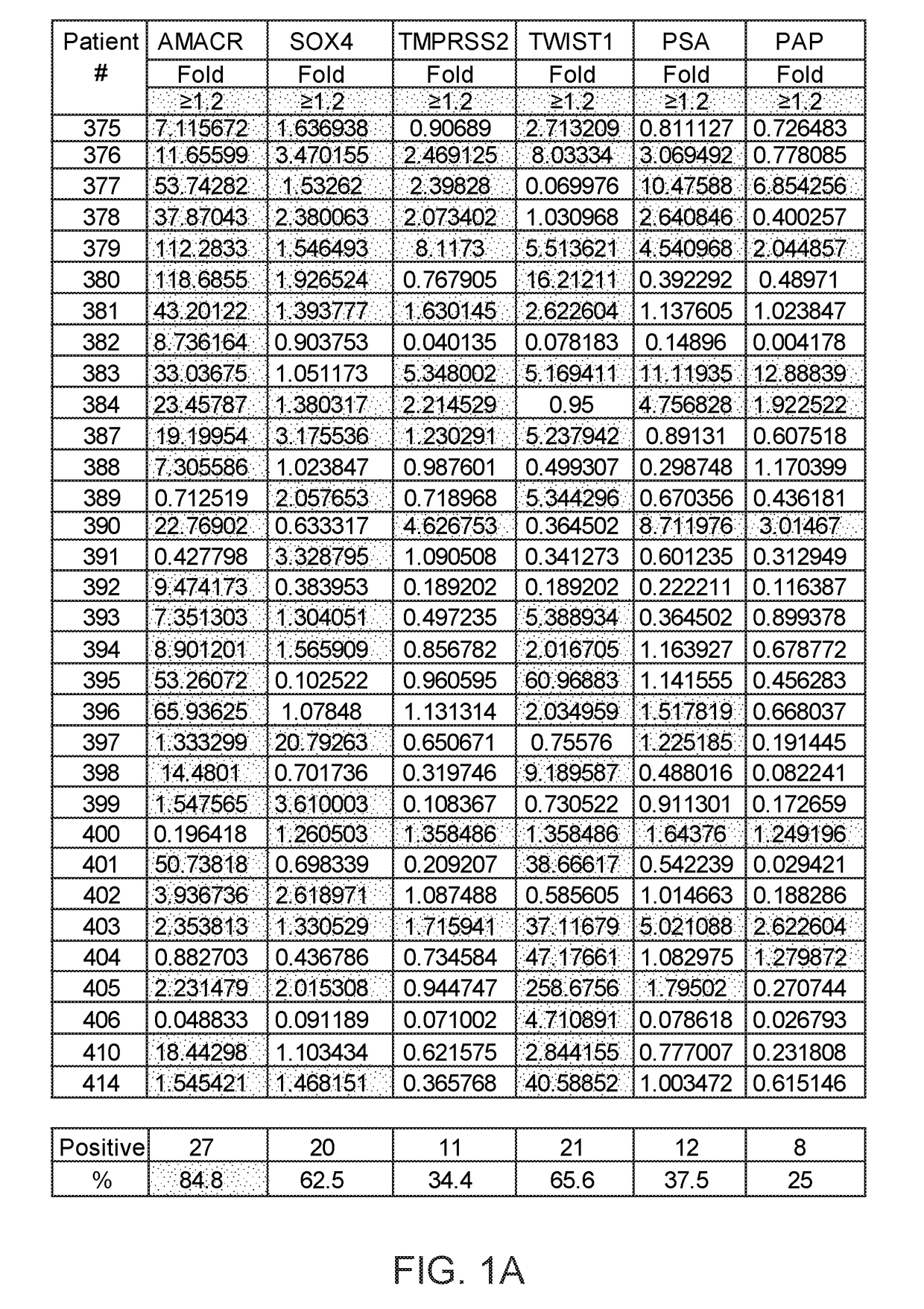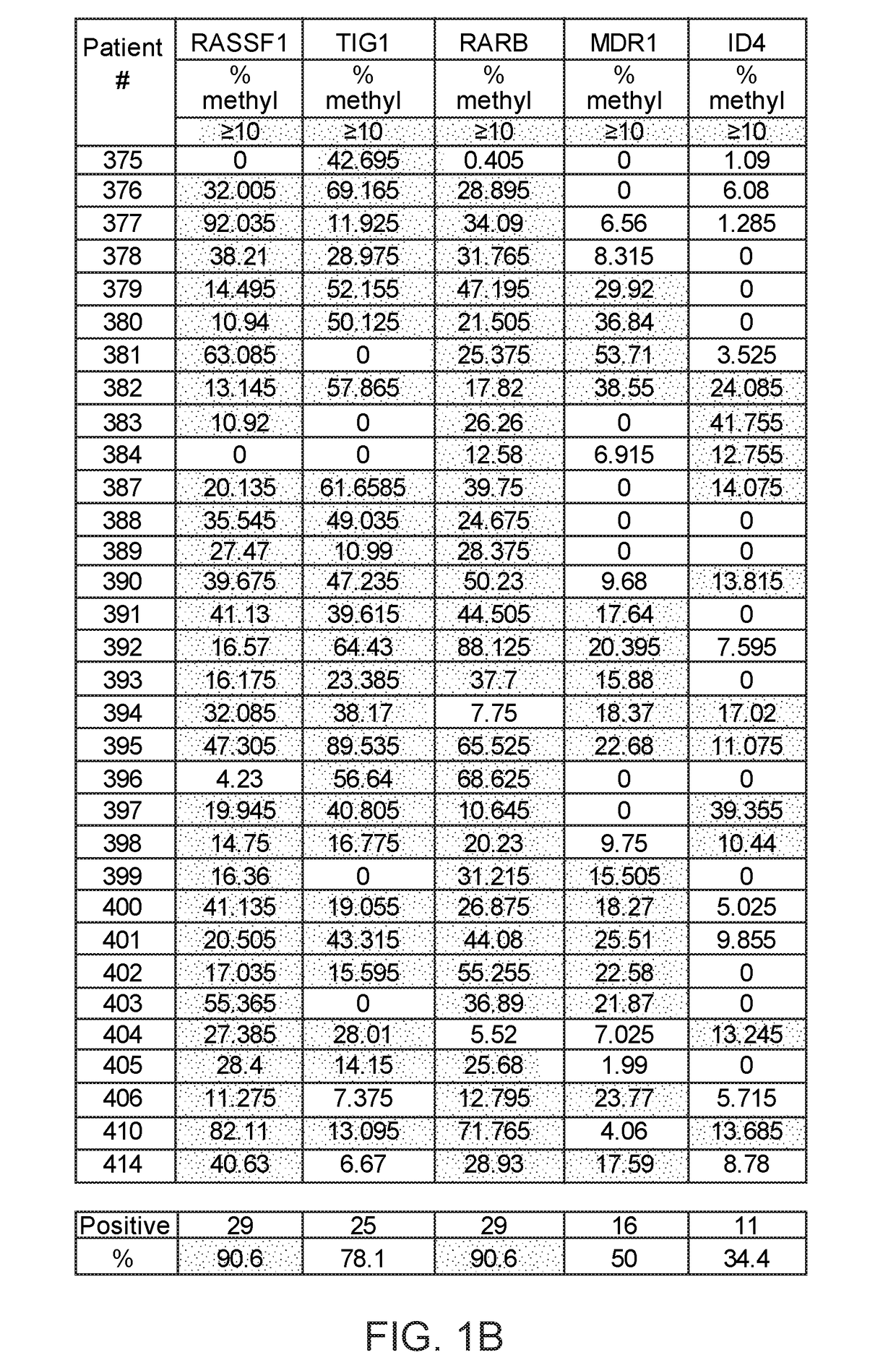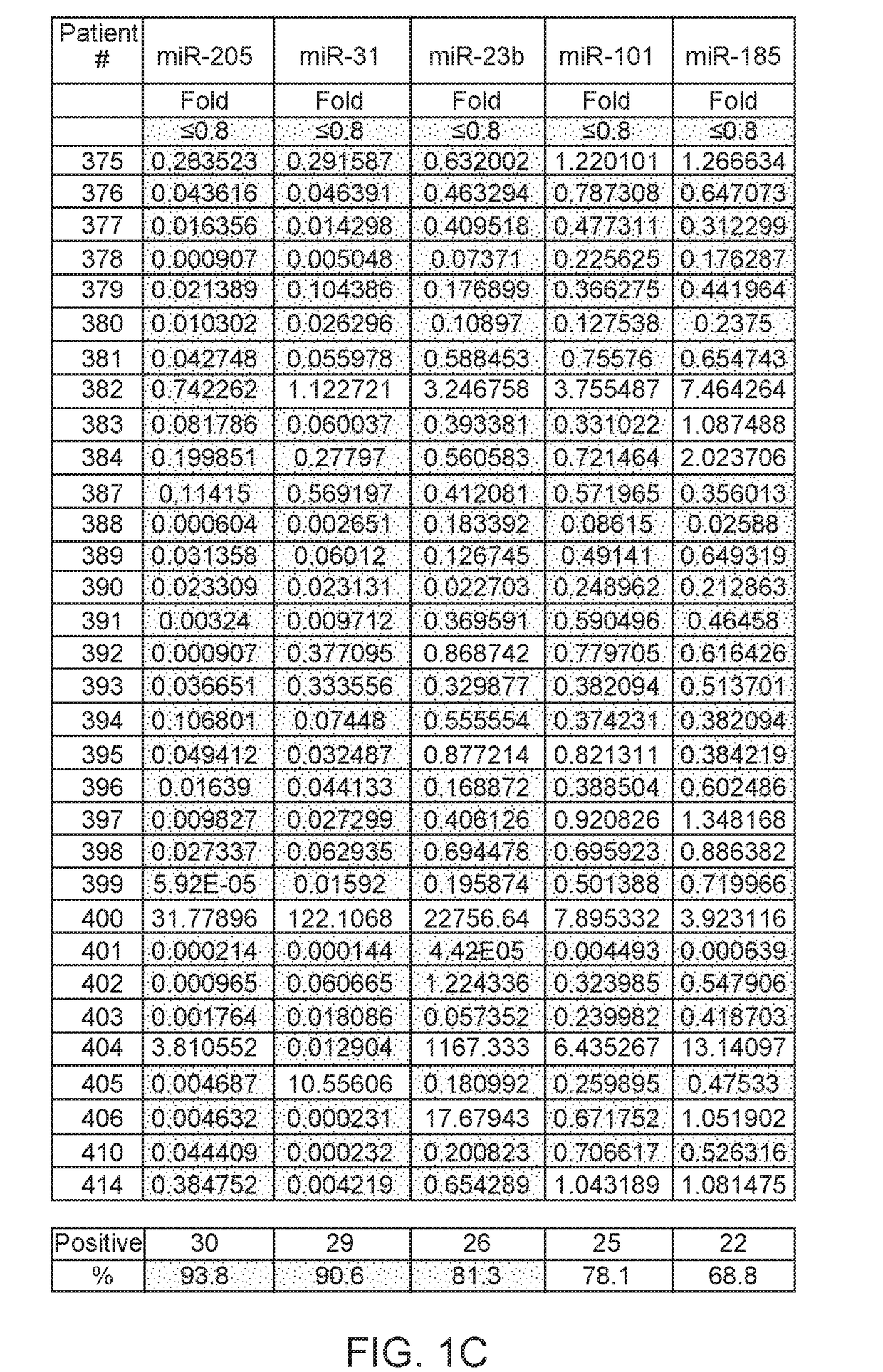Method of analysis allowing avoidance of surgery
a technology of analysis and surgery, applied in the field of analysis allowing surgery avoidance, can solve the problems of not having clinically available multivariate genetic biomarkers for early cancer detection, and little information available to guide the treatment of patients with various cancers, so as to reduce the risk of mortality and increase the risk of mortality
- Summary
- Abstract
- Description
- Claims
- Application Information
AI Technical Summary
Benefits of technology
Problems solved by technology
Method used
Image
Examples
example 1
[0244]Eighteen biomarkers were assayed in prostate cancer tissue (see Materials and Methods).
[0245]18 biomarkers were tested in prostate cancer: high expression of oncogenes such as AMACR (27 / 32, 84%); SOX4 (20 / 32, 62%), TMPRSS2 (11 / 32, 34%), TWIST1 (21 / 32, 65%), PSA (12 / 32, 37%), PAP (8 / 32, 25%); high DNA methylation of RASSF1 (29 / 32, 90%), TIG1 (25 / 32, 78%), RARB (29 / 32, 90%), MDR1 (16 / 32, 50%), ID4 (11 / 32, 34%); low expression of non-coding microRNAs such as miR-205 (30 / 32, 93%), miR-31 (29 / 32, 90%), miR-23b (26 / 32, 81%), miR-101 (25 / 32, 78%), miR-185 (22 / 32, 68%), high expression of long non-coding RNA such as ZFAS1 (17 / 32, 53%), MALAT-1 (18 / 32, 56%). Therefore, the combination of these genes has the potential for diagnosis of prostate cancer.
[0246]Gleason “score” or “grade” was given to prostate cancer based upon its microscopic appearance. Tumors with a low Gleason score typically grow slowly enough that they may not pose a significant threat to the patients in their lifetimes...
example 2
[0266]The typical prostate cancer diagnoses such as, PSA and Gleason grade and staging scores do not adequately predict clinical outcome. The PSA gene expression only has a 37% accuracy rate for identifying cancerous tissue verses normal. Therefore to prove predictability and the probability that cancer severity and stages prognoses are improved with genetic markers, unique approaches need to be utilized.
[0267]The direct comparison of expression levels with themselves and among known normal and cancerous cells and tissues allows for algorithm development that not only improves the probability of detecting cancer, but also of its aggressiveness.
[0268]Analyses were done on over 30 genes on hundreds of samples, down selected from over 200 prostate cancer genetic markers, for DNA and RNA expression in normal and cancerous biopsy samples from the same human patient. PCR and rtPCR methods were used as described above.
[0269]Oncogene profile. Over-expression of oncogenes is involved in the ...
example 3
[0314]The gene expression profile in kidney cancer tissue of each of the patient listed in FIG. 2 was analyzed to provide a treatment best suited to the patient based on the gene expression profile. See FIG. 2. The fold change in gene expression / methylation was based on comparison of normal and cancerous kidney tissue from the same patient.
[0315]Patient # 506: Out of two oncogenes, both have no change. Out of two oncogenic miRNAs, miR-210 is increased by 76.2 fold, miR21 is higher by 6.8 fold. Out of two tumor suppressor miRNAs, miR-23b is decreased by 1.3 fold. Out of two DNA methylation genes, one gene TIG1 is methylated by 18% and another gene has no change. Long non-coding RNAs, ZFAS1 is increased by 2.4 fold.
[0316]Treatment—Watchful waiting. Kidney cancer is most often treated with surgery, targeted therapy, and / or immunotherapy. Radiation therapy and chemotherapy are occasionally used. Patients with kidney cancer that has spread (metastatic cancer, see below) often receive mul...
PUM
| Property | Measurement | Unit |
|---|---|---|
| time | aaaaa | aaaaa |
| time | aaaaa | aaaaa |
| thick | aaaaa | aaaaa |
Abstract
Description
Claims
Application Information
 Login to View More
Login to View More - R&D
- Intellectual Property
- Life Sciences
- Materials
- Tech Scout
- Unparalleled Data Quality
- Higher Quality Content
- 60% Fewer Hallucinations
Browse by: Latest US Patents, China's latest patents, Technical Efficacy Thesaurus, Application Domain, Technology Topic, Popular Technical Reports.
© 2025 PatSnap. All rights reserved.Legal|Privacy policy|Modern Slavery Act Transparency Statement|Sitemap|About US| Contact US: help@patsnap.com



